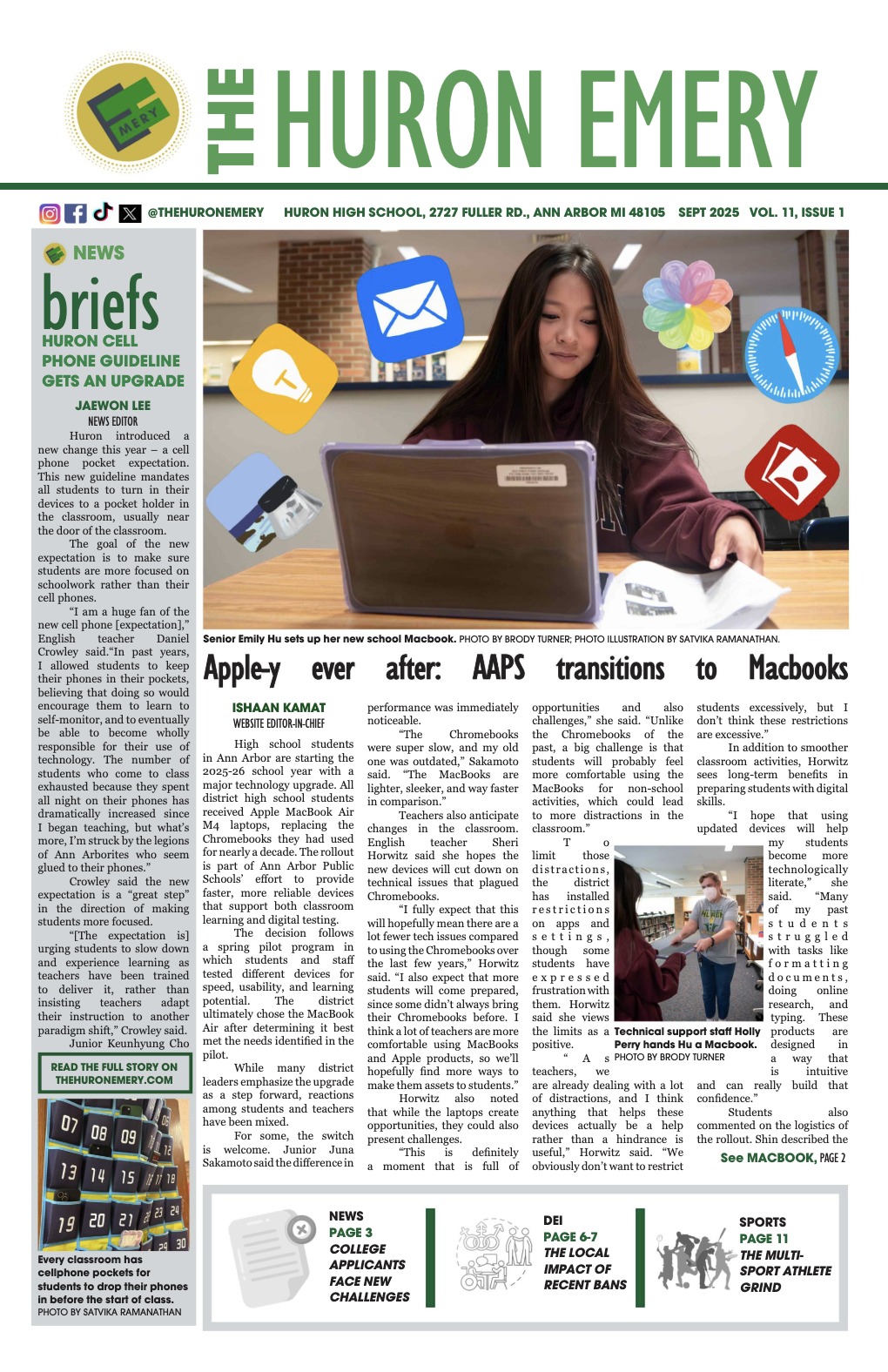The Pros and Cons of the Availability of Virtual School
February 5, 2022
Pros:
We all remember the year 2020. The drastic change that tossed us all into a bewildering year and a half of adjusting to living life and conducting our business through a screen. At first, it was definitely a strange and sudden change in lifestyle. Living at home, wearing pajamas all day and eating copious amounts of junk food while sprawled out on the couch, or in bed, was something new and difficult to figure out. Every kid in school had to go through this struggle of adjusting to a completely new form of education: virtual learning. It wasn’t easy at first, but now that students and school districts around the country have put together working and functioning virtual learning programs and systems allowing students to get the same level of education as they would with in-person teaching. The institution of online schooling is the best new alternative learning method.
From Feb. 2-4, the Ann Arbor Public School (AAPS) board of education made the last minute decision to cancel in-person school, and switch to entirely synchronous virtual learning for three days to outlast a snowstorm. Switching to online instead of canceling school caused an uproar in the AAPS community. Of course, nobody wants to lose the possibility of having snow days, but that isn’t the only effect of the availability of virtual learning. For instance, schools in the United States, by law, have to meet a certain number of days of total attendance in the school year to finish an entire school year. If AAPS cancels a day of school—after they’ve already used their allotted number of six days off, allowed by the federal government in a year, it leads to more days being added on to the end of the school year to make up for the lack in attendance totals. Some students have summer jobs lined up, important internships, early summer vacations, and all sorts of other things planned. Having virtual school as a viable and well-working alternative to use, when in-person school ends up not being an option for a small period of time, entirely eliminates the chance of a school having to tack on more and more days to the end of their calendar. This makes it ten times more convenient for students in the long term, for schools to switch to online when . On top of that, it is not like the quintessential snow day has been entirely lost. There will still be days in the early school year during winter when regular, good, old-fashioned snow days can be used, but using online synchronous learning here and there, for a day or two, is a great way to stay aligned to the normal school year calendar, and not have to shorten summer break essentially. Additionally, virtual learning is much more convenient now, with many schools around the Ann Arbor community dealing with staff absences and teachers being out due to Covid-19. Switching to online school allows teachers to work comfortably from home and still assign assignments and help their students learn even while being quarantined. Virtual learning is simply an auxiliary method. Students will often draw an uncomfortable comparison of virtual school days to the year and a half the whole world spent on lockdown; and these two things are not the same. Now that virtual school isn’t something that was put together and made as a last resort back in April of 2020, it’s a fairly similar method of learning to in-person learning.Virtual school not only saves everybody’s summer break from being shorter, it’s also a well-oiled machine that can easily replace and live up to the same learning standard as in-person learning.
Cons:
As a kid, the feeling of relief on a wonderful January morning watching the snowfall from your window view onto to inches below as you get the notification on your TV that schools are closed was a peak moment of the average American child’s youth. As we have grown in age, so has our workloads. Often unpalatable and hard to manage and straight up overwhelming at most times of the year, nothing most students and teachers alike need now more than ever is a good ol’ fashioned Snow Day. And right now, it’s time we have more days where teachers can focus on their work and sometimes their own children, and students can catch up on work and spend the rare period of time relaxing a little.
In the state of Michigan, we are allotted six “lost time” days, time set aside for many reasons but predominantly snow/ice delays in roads, causing unsafe travel. However, so far this year we have used every single of the six days, with most of them being used in the first semester due to staff shortages. So now, our former snow days have been replaced with virtual days. These often ill-prepared last-minute virtual days create challenges for both staff and students alike. With only a few hours to change a teaching plan from in-person to virtual to up to 6 different classes, teachers for sure have reason to ask the Michigan Department of Education for more days.
In the case of students, at the elementary level younger kids can have the joy of snow days once again, while upper level students can use this time to catch up either on work or their own mental health. Students in high school could also benefit on a normal snow day by using this time to prepare for the SAT, ACT, and the multiple AP exams they may be taking soon.
In my experience, online school is quite the catastrophe. I frequently zone out and get bored during these classes. It’s unmotivating, tiring, and almost always straight up impossible to get a desire to work. We also do not have a good online schedule. Five minutes in between classes online is not a great system. Classes frequently feel like marathons with very few and short breaks. And, I know I’m not the only one. Many other students I’ve talked with about this feel the exact same way.
Students and teachers all do not enjoy virtual. We also don’t enjoy the idea of extra days at the end of the year. So, why not just allocate a couple extra days during such a confusing and odd year? With everyone disliking the system of the virtual days, why not just simply allow two or three days more per year? If this is the new normal, a new plan with a new revamped system would do a lot more wonders for parents, students, and educators alike.















